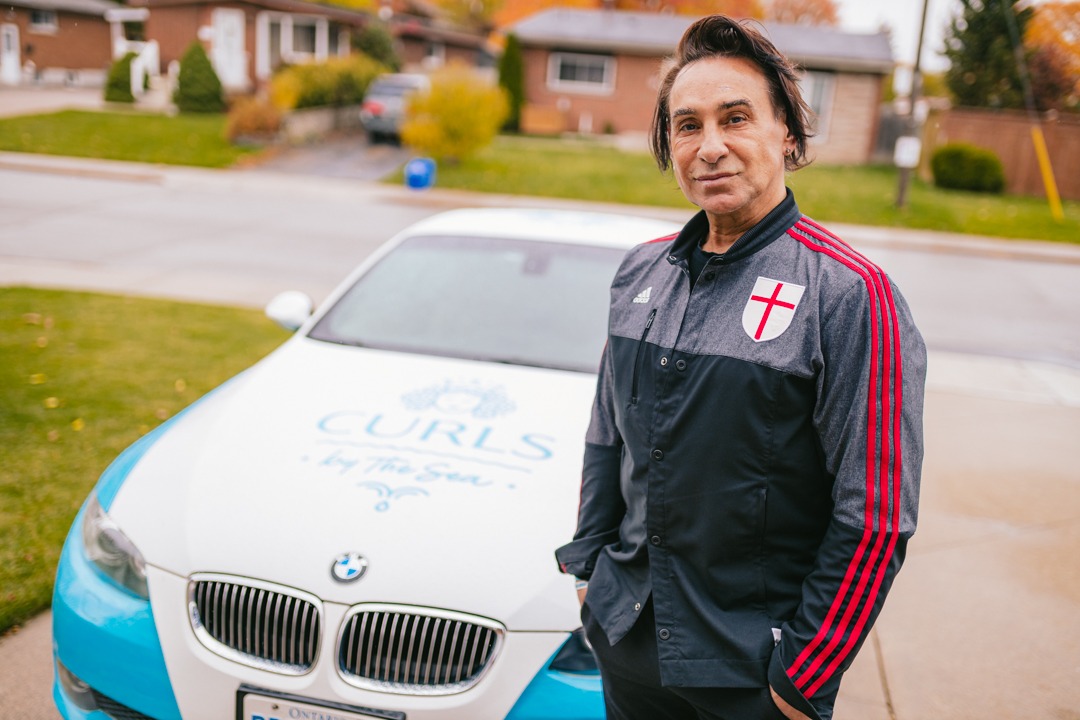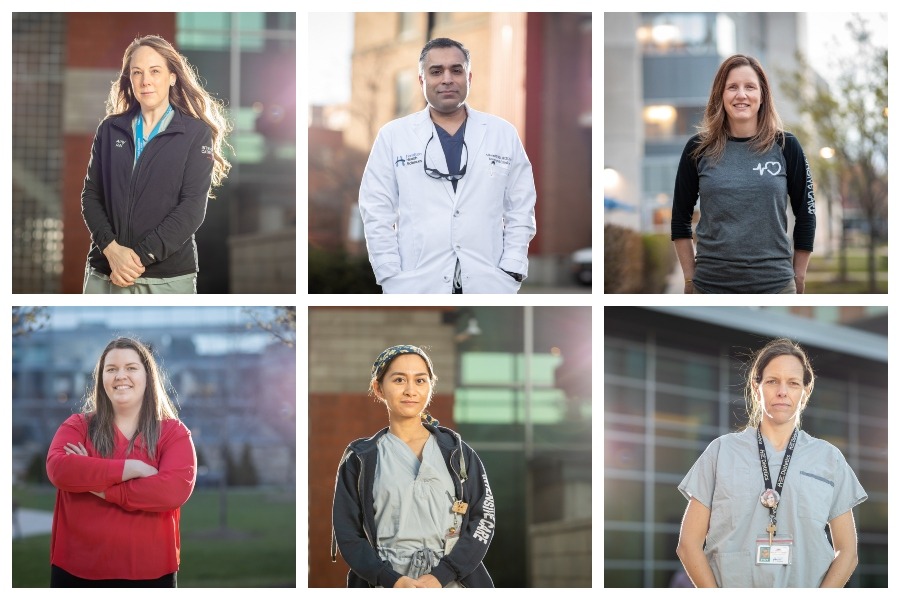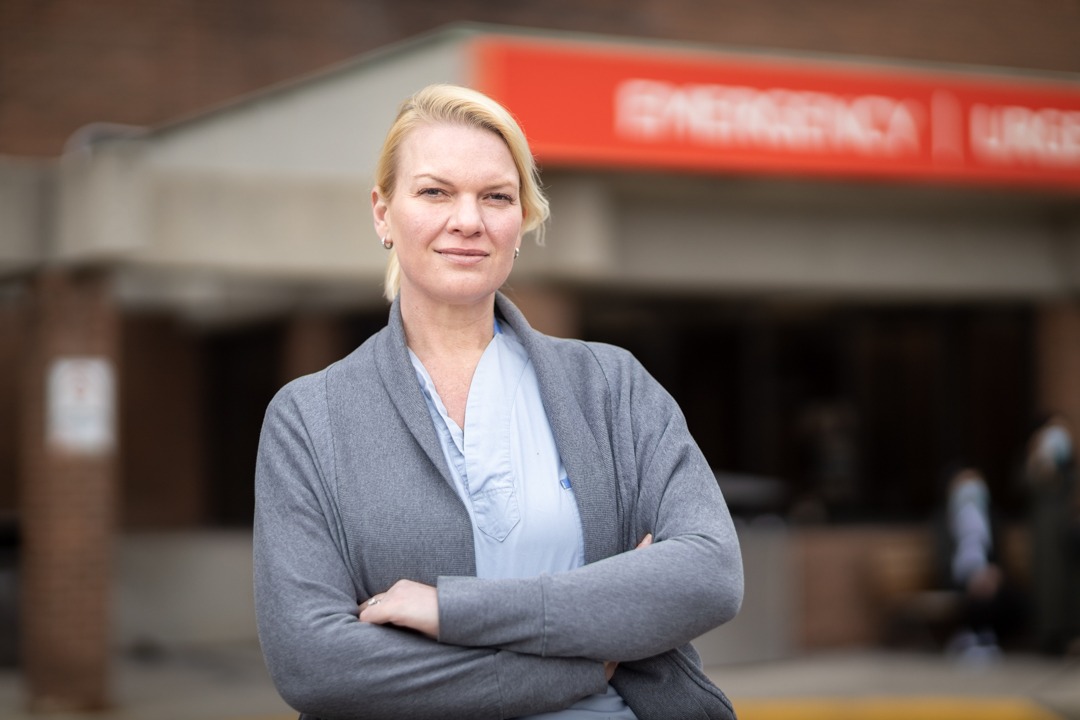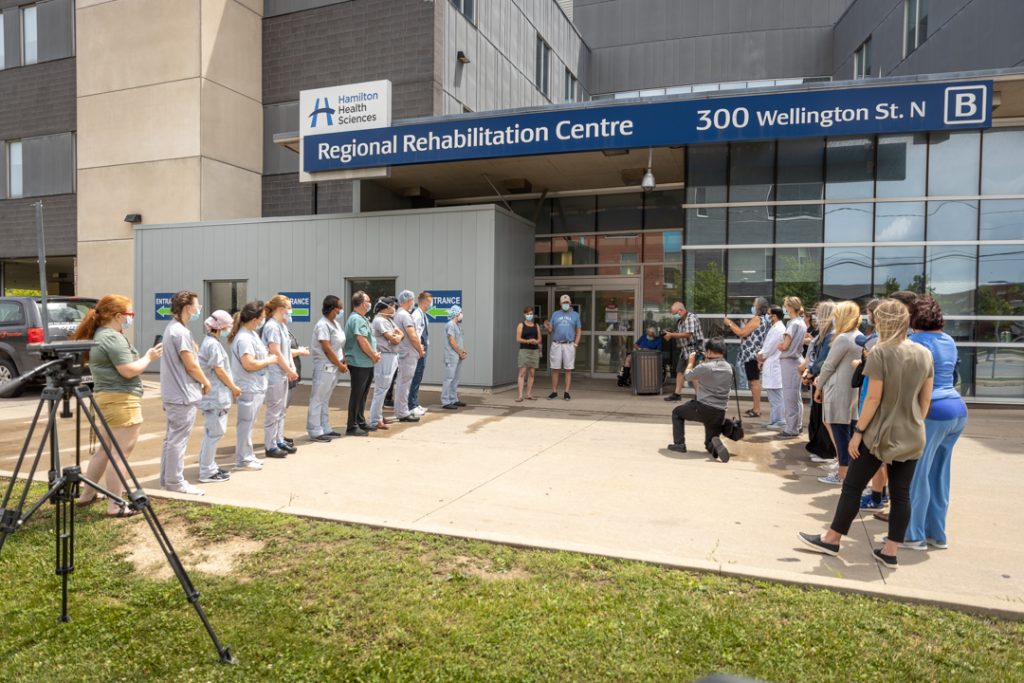
“Angels in scrubs” provide COVID care with ECMO heart-lung bypass machine
Update: After a nearly 3-month stay at the Hamilton General Hospital, Mike VanNetten recovered enough from COVID to go home on June 30. With his wife Sarah at his side, he thanked the dozens of physicians and staff from whom he received care. Many of them gathered outside the hospital and applauded him as he left. Mike was once one of the sickest patients at Hamilton Health Sciences (HHS), requiring care on an extracorporeal membrane oxygenation (ECMO) machine to help him breathe and provide oxygen. This is the story about his journey:
Each day for nearly one month, Sarah VanNetten sat gowned and masked by her husband Mike’s hospital bed. She would sing to him, update him on family news, and pray for him.
At 45, Mike is one of COVID-19’s younger victims. He is on an extracorporeal membrane oxygenation (ECMO) machine at Hamilton Health Sciences’ (HHS) Hamilton General Hospital (HGH). The artificial heart-lung bypass machine is reserved for some of the sickest patients who are in severe cardiac or respiratory failure.
VanNetten says the family is unsure how Mike could have contracted COVID-19. “We’ve been doing everything right,” she says. “We’ve taken the pandemic very seriously, wearing masks, limiting social interactions, keeping our distance from others, and only leaving our home for work.”
“These people believe in what they do, and I believe in them.”
For the VanNettens, this is no small feat – especially for Mike, who is known as a happy-go-lucky person from a farming family who is also well known in their home area of Norfolk County.
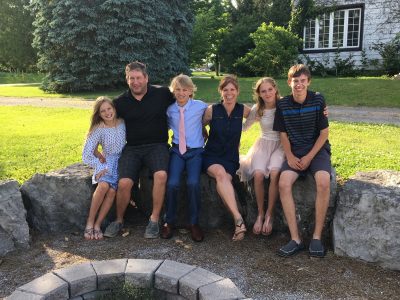
Mike and Sarah VanNetten sit with their children.
On April 3, Mike was experiencing cold-like symptoms. By April 8, he had developed chills and a fever, and had a persistent cough. Although Mike is usually one to tough it out when he has an ailment, his wife urged him to go to hospital. Sarah could hear that he was struggling to breathe.
By April 10, Mike was on a ventilator at Joseph Brant Hospital in Burlington. On April 13 he was air lifted to HGH where he was put on the ECMO machine.
The most aggressive form of life support
HHS, which is one of only four hospitals in Ontario to provide ECMO care, introduced the life-saving machine early in 2020. Considered a last-resort treatment, ECMO has been used successfully at HHS for critically ill COVID-19 patients.
The ECMO machine replaces the function of the patient’s own lungs by pumping blood from the patient’s body to an artificial lung (oxygenator) that adds oxygen to it and removes carbon dioxide.

Paul Hunter is a charge perfusionist in the intensive care unit at the Hamilton General Hospital
Paul Hunter, ECMO charge perfusionist at HGH, says the machine gives the patient’s lungs a chance to rest and recover when a conventional ventilator has not been sufficient to meet a patient’s needs. A perfusionist is a specialist in charge of heart-lung bypass machines, usually used during heart surgery.
“ECMO allows the ventilator settings and oxygen levels to be decreased to minimal settings in order not to cause any long-term damage and buy time for the lungs to heal,” he says.
ECMO is the most aggressive form of life support in an intensive care unit, and it requires highly skilled healthcare workers trained in extracorporeal support (a medical procedure which is performed outside the patient’s body) to constantly manage and monitor these patients through the course of their time on the machine.
“An ECMO patient is extremely resource- and labor-intensive, and requires the specialization, experience and skillset of many healthcare disciplines that are all centered on giving the utmost in patient care to the most critically ill patients,” says Hunter. “It takes incredible teamwork and dedication.”
Typically, a patient’s ECMO team includes nurses, physicians, respiratory therapists, pharmacists and many other allied health professionals working in tandem for the prolonged support of patients.
“The care Mike has received is beyond anything I have ever experienced,” says VanNetten. “The healthcare team takes care of their patients, but they address the care of their loved ones as well. They are angels in scrubs.”
Improved technology leads to worldwide demand
ECMO was conceptualized in the 1950s, but in the last 20 years, has progressed as essential technology in the care of adults and children with severe heart and lung problems.
Hunter says that there are a few reasons for the medical community’s increased use of ECMO in caring for the sickest patients. First, technology behind the machine has significantly advanced over the last two decades. Second, there is increasing evidence that, in adult patients, a more prolonged duration of support may allow their lungs to rest and recover. Finally, there’s the pandemic.
“The pandemic has led to an incredible demand worldwide for ECMO due to the overwhelming severity of the virus and damage it can cause to a patient’s lungs, whereby a traditional ventilator can become ineffective for treatment,” he says. “Patients with COVID respiratory failure seem to be more critically ill and for longer periods of time than a traditional respiratory failure patient.”
Hunter says the teams at HGH are seeing more patients like Mike, who are young and otherwise healthy, but who require ECMO for longer periods of respiratory support in this third wave compared to previous waves.
He wants patients’ loved ones to know that they are here to support them: “The caregivers looking after patients on ECMO are some of the most specialized healthcare professionals, and we are working tirelessly all hours of a day to save the lives of these patients so they can recover and return home to their families.”
A community rallying together
On April 26, supportive friends, masked and distanced, joined the VanNetten family, including Mike’s father Jack, his brother Kevin, and sister-in-law Cindy, outside HGH to talk about Mike’s journey and show their gratitude to those caring for him. Mike, who is a big Toronto Maple Leafs fan, would have been happy to know that National Hockey League (NHL) legends, Dave Hutchison and Ryan VandenBussche were among those in the group. They presented the family with some NHL memorabilia and personal notes of support to give to Mike when he gets back home.
VanNetten told Mike all about it the next time she visited. At the time, he was unable to communicate, but Sarah new that he was listening.
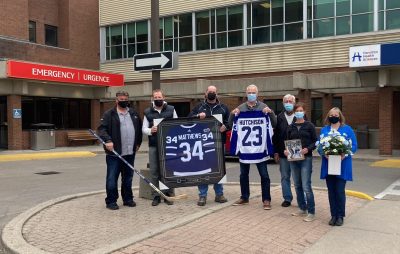
A group arrives outside the Hamilton General Hospital to present Sarah with hockey-themed gifts to give to Mike when he returns home. Left to right are: Kevin VanNetten (Mike’s brother), Ryan VandenBussche, Todd Boughner, Dave Hutchison, Jack VanNetten (Mike’s dad), Sarah VanNetten (Mike’s wife) and Cindy VanNetten (Mike’s sister-in-law.)
VanNetten has been keeping family and friends up to date on Mike’s progress through social media every day. As a result, a whole community has rallied around Mike and his family, anticipating his return home. Porch lights beam from several area homes and businesses, and many residents have placed hockey paraphernalia outside their doors as an affectionate tribute to Mike.
The VanNettens continue to advocate for following public health guidelines in the fight against COVID-19, recognizing both the strain the virus has placed on families and the healthcare system.
“The teams who care for COVID patients see things nobody should have to see,” says Sarah.
But they are caring for families as their own.
“These doctors and nurses love their job with a passion,” says Sarah. “Each day, I leave Mike in their care and I know that he is truly in the best place he can be right now until he heals to come home to us. These people believe in what they do, and I believe in them.”

